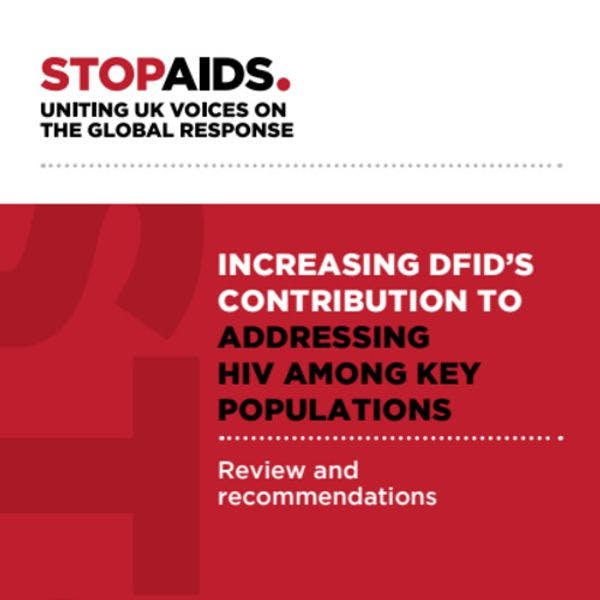Increasing DFID's contribution to addressing HIV among key populations - Review and recommandations
In developing countries, female sex workers are 14 times more likely to contract HIV than other women of reproductive age1, while globally men who have sex with men (MSM) are 19 times more likely than other men. Outside of Africa, 30% of new HIV infections are among people who inject drugs, rising to 80% in some countries.3 Transgender people, who are often overlooked or conflated with MSM, are also acutely vulnerable, with one study estimating that transgender women are 49 times more likely to have HIV than the general population4 and a growing body of evidence pointing to high HIV risks for transgender men too5. These statistics show that Millennium Development Goal 6, which aims to halt and reverse the spread of HIV, will not be met without a stronger focus on key populations.
Under its two HIV strategies, Taking Action and Achieving Universal Acces, the UK Department for International Development (DFID) made a critical contribution to scaling up HIV responses for key populations. More recently, DFID’s position on HIV and AIDS has been outlined in its 2011 position paper, Towards Zero Infections, and this was recently updated in partnership with STOPAIDS. The updated version, Towards Zero Infections – Two Years On, identifies key populations as one of three DFID priorities. At the same time, DFID’s 2011 bilateral aid review announced plans to significantly reduce the number of UK bilateral aid programmes, and Towards Zero Infections outlines the resulting closure of several important programmes aimed at tackling HIV among key populations.
DFID will now support key populations primarily through the Global Fund to Fight Aids, Tuberculosis and Malaria and the Robert Carr Civil Society Networks Fund.
This briefing has been prepared by STOPAIDS, the network of 80 UK agencies working since 1986 to secure an effective global response to HIV and AIDS, following consultation with members and global key population networks. It
commends DFID on its commitments to address HIV among key populations in developing countries, and reviews areas where the Department may need to take further action.
It recommends as a starting point that DFID develops a theory of change, in full consultation with key population led networks, which sets out how it plans to deliver progress for key populations in advance of the 2015 Millennium Development Goals (MDGs) deadline.
It also calls on DFID to support targets on HIV and key populations in the post 2015 development framework and beyond 2015, to develop a health strategy which will commit to ending AIDS as a public health threat and improving access to rightsbased health services for key populations.
Keep up-to-date with drug policy developments by subscribing to the IDPC Monthly Alert.
